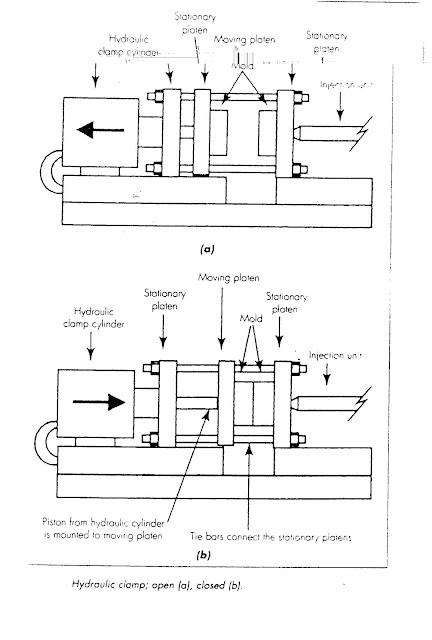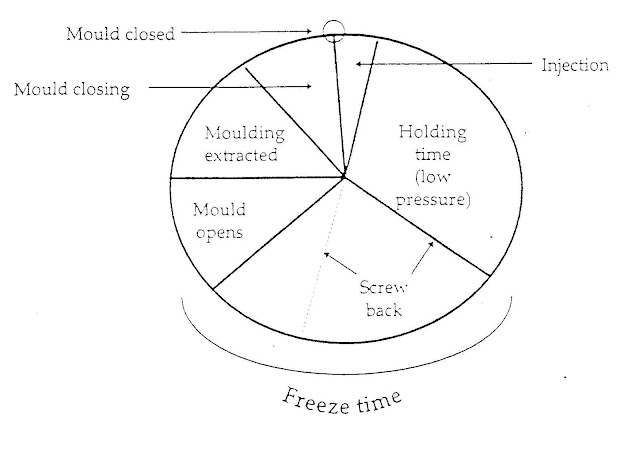As compare to moulding, the following designing factors must be set.
1; gate and vent locations must allow or uniform filling of the cavity without melt jetting
or air entrapment.
2; the ejection area must be of sufficient size and location for uniform ejection of the
part without damage to it.
3; side sections must have ample draft for ease of ejection.
4; undercuts must be carefully designed with well rounded corners and draft angles to
allow uniform part remoulding without damage.
5; changes in wall thickness should be kept to a minimum or made gradually. Sharp
variations in wall thickness will result in variations in wall cooling rate, causing
war page.
6; ribs, bosses or fillets should be made thin to avoid sink marks on the surface of the
adjoining section, and to keep from increasing cycle time.
7; fillets should be placed at sharp corners to decrease stress concentration. Generally a
fillet radius to wall thickness ratio of - 0.6 is sufficient.
8; length of the flow paths must not exceed the flow ability of the resin selected for the
application.
Mechanical strength, appearance and function ability will also be affected by the design of
the various features of the part, for example :
1; gate and vent locations must allow or uniform filling of the cavity without melt jetting
or air entrapment.
2; the ejection area must be of sufficient size and location for uniform ejection of the
part without damage to it.
3; side sections must have ample draft for ease of ejection.
4; undercuts must be carefully designed with well rounded corners and draft angles to
allow uniform part remoulding without damage.
5; changes in wall thickness should be kept to a minimum or made gradually. Sharp
variations in wall thickness will result in variations in wall cooling rate, causing
war page.
6; ribs, bosses or fillets should be made thin to avoid sink marks on the surface of the
adjoining section, and to keep from increasing cycle time.
7; fillets should be placed at sharp corners to decrease stress concentration. Generally a
fillet radius to wall thickness ratio of - 0.6 is sufficient.
8; length of the flow paths must not exceed the flow ability of the resin selected for the
application.
Mechanical strength, appearance and function ability will also be affected by the design of
the various features of the part, for example :







